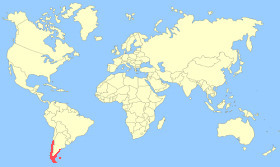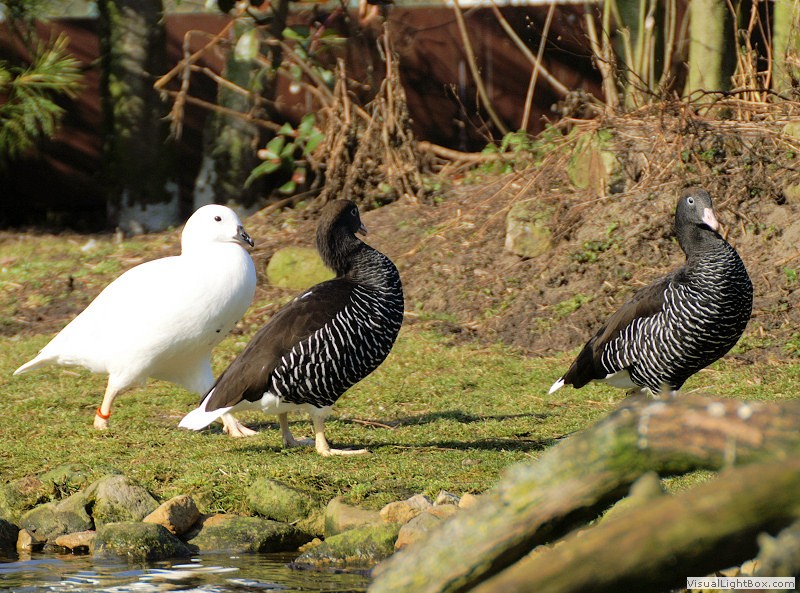Appearance:
Male: - The male Kelp Goose has an all-white plumage, a black beak, brown eyes, and yellow legs and feet.
Female: - The female has a dark-brown head and neck, white eye-ring, a blackish-brown breast and flanks with white barring, dark-brown upperparts, a white abdomen, tail and underwing, and black wing tips.
Size: - Typical Adult is 55-65cm (22-25in).
Food: - Mainly Kelp (seaweed and algae) along the coast, also grasses and berries.
Habitat/Range: - Rocky coasts, and coastal freshwater lagoons in southern Chile and Argentina, mainly in Patagonia, Tierra del Fuego, and the Falkland Islands.

 Breeding Habitat/Resident,
Breeding Habitat/Resident,  Migration or Winter Area.
Migration or Winter Area.Breeding Season: - October to November.
Eggs: - 3 to 7 (creamy or pale buff colour).
Notes: - There are two sub-species of Kelp Goose: Greater Kelp Goose (Chloephaga Hybrida Malvinarum), and Lesser Kelp Goose (Chloephaga Hybrida Hybrida). The Greater Kelp Goose is only found in the Falkland Islands and is a slightly larger goose. The Kelp Goose is part of the shelduck subfamily Tadorninae. It gets its name because it moves along the coast of South America feeding on kelp.
Conservation status (IUCN 3.1):
Least Concern.
Classification: - Family: Anatidae,
Subfamily: Tadorninae, Genus: Chloephaga.



 photo by Neill Smith.
photo by Neill Smith.
